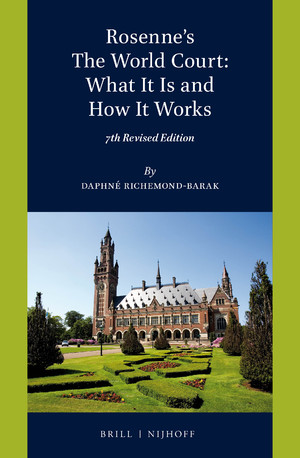
Rosenne's The World Court offers a contemporary and interactive take on the UN's main judicial organ. The International Court of Justice, which has remained largely unchanged since its creation in 1945, operates within a growing network of states and international bodies. The book analyzes the institution via the prism of its relationship with states - the Court's natural constituency - as well as UN organs, international and domestic courts, academia, and non-state actors. It offers topics for class discussions, moot court exercises, and model syllabi. Direct engagement with the writings of leading scholars in international law and international relations helps uncover the Court's political and legal role in a complex international order.
The book's novel and multidisciplinary approach make it an essential resource for students, teachers, and scholars.